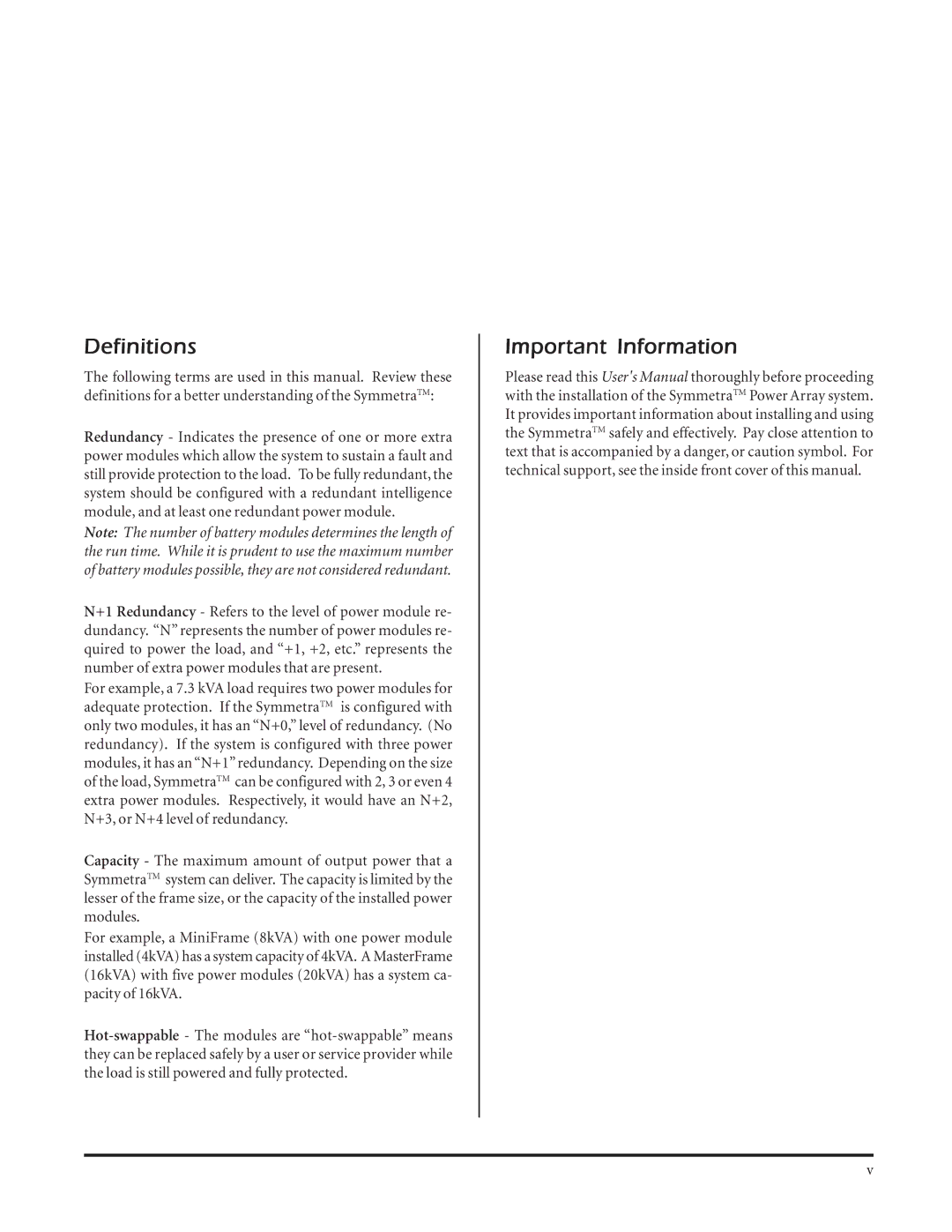
Definitions
The following terms are used in this manual. Review these definitions for a better understanding of the SymmetraTM:
Redundancy - Indicates the presence of one or more extra power modules which allow the system to sustain a fault and still provide protection to the load. To be fully redundant, the system should be configured with a redundant intelligence module, and at least one redundant power module.
Note: The number of battery modules determines the length of the run time. While it is prudent to use the maximum number of battery modules possible, they are not considered redundant.
N+1 Redundancy - Refers to the level of power module re- dundancy. “N” represents the number of power modules re- quired to power the load, and “+1, +2, etc.” represents the number of extra power modules that are present.
For example, a 7.3 kVA load requires two power modules for adequate protection. If the SymmetraTM is configured with only two modules, it has an “N+0,” level of redundancy. (No redundancy). If the system is configured with three power modules, it has an“N+1”redundancy. Depending on the size of the load, SymmetraTM can be configured with 2, 3 or even 4 extra power modules. Respectively, it would have an N+2, N+3, or N+4 level of redundancy.
Capacity - The maximum amount of output power that a SymmetraTM system can deliver. The capacity is limited by the lesser of the frame size, or the capacity of the installed power modules.
For example, a MiniFrame (8kVA) with one power module installed (4kVA) has a system capacity of 4kVA. A MasterFrame (16kVA) with five power modules (20kVA) has a system ca- pacity of 16kVA.
Important Information
Please read this User's Manual thoroughly before proceeding with the installation of the SymmetraTM Power Array system. It provides important information about installing and using the SymmetraTM safely and effectively. Pay close attention to text that is accompanied by a danger, or caution symbol. For technical support, see the inside front cover of this manual.
v
